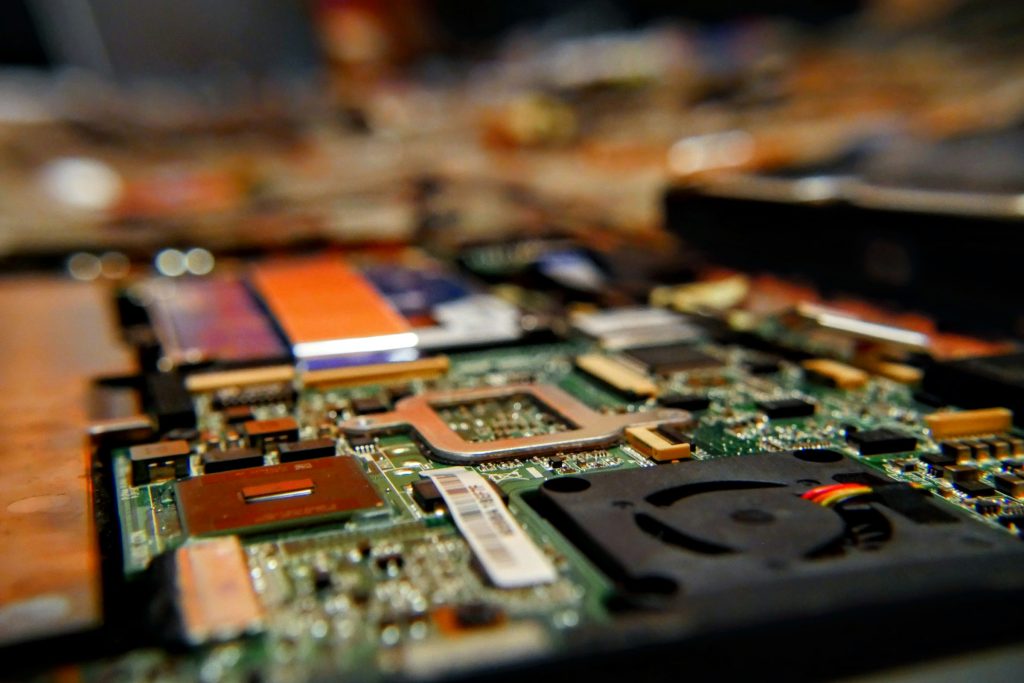Building a custom laptop can seem like a daunting task for beginners, but with the right approach and information, it can be a rewarding and educational experience. While constructing a laptop from scratch is more complex than assembling a desktop PC due to the intricacies of laptop components, you can still create a customized and powerful machine tailored to your needs by selecting the right parts and understanding the basics. This guide will walk you through the process of building a custom laptop, from understanding components to assembling and configuring your machine.
As you embark on this journey, it’s fascinating to consider how far consumer computing has come. The evolution of consumer computing has transformed from bulky, limited machines to sleek, powerful devices that fit in our backpacks. This progress has greatly influenced laptop design and component options, providing more choices and customization possibilities than ever before.
1. Understand the Basics
Before diving into the build, it’s essential to understand the core components of a laptop and their functions:
- Motherboard: The central circuit board that connects all components. Laptop motherboards are usually designed for specific models or brands, making them less modular than desktop boards.
- Processor (CPU): The brain of the laptop that performs computations and instructions. Popular choices include Intel and AMD processors.
- Memory (RAM): Short-term memory that helps the CPU process tasks. More RAM allows for better multitasking.
- Storage: Hard drives (HDD) or solid-state drives (SSD) store your data. SSDs offer faster performance compared to HDDs.
- Graphics Card (GPU): Handles rendering of images and videos. Some laptops use integrated graphics, while others have dedicated GPUs.
- Battery: Provides power to the laptop when not connected to an external power source.
- Cooling System: Keeps the laptop’s components cool to prevent overheating. This includes fans and heat sinks.
- Display: The screen of the laptop, which comes in various sizes and resolutions.
2. Choose Your Components
Choosing the right components is crucial for building a laptop that meets your needs. Here’s a breakdown of each component to consider:
Processor (CPU)
- Performance: For general use, an Intel Core i5 or AMD Ryzen 5 is sufficient. For gaming or intensive tasks, consider an Intel Core i7 or AMD Ryzen 7.
- Compatibility: Ensure the CPU is compatible with the laptop motherboard. Laptop CPUs are often soldered onto the motherboard, so you’ll need to select a motherboard that supports your chosen CPU.
Memory (RAM)
- Capacity: Aim for at least 8 GB of RAM for general tasks. For gaming or heavy multitasking, 16 GB or more is recommended.
- Type: Check the type of RAM supported by the motherboard (e.g., DDR4).
Storage
- SSD vs. HDD: SSDs are faster and more reliable, while HDDs offer more storage space at a lower cost. Consider a combination of both if you need a balance of speed and storage.
- Capacity: A minimum of 256 GB SSD or 1 TB HDD is recommended for most users.
Graphics Card (GPU)
- Integrated vs. Dedicated: Integrated graphics are suitable for everyday tasks, but a dedicated GPU is necessary for gaming or graphic-intensive applications. Check compatibility with your motherboard.
Display
- Size and Resolution: Choose a display size and resolution that suits your needs. Common resolutions include Full HD (1920×1080) and 4K (3840×2160).
- Panel Type: Consider panel types like IPS for better color accuracy and viewing angles.
Battery
- Capacity: Higher capacity batteries provide longer usage time. Check the specifications to ensure the battery meets your needs.
Cooling System
- Fan and Heat Sink: Ensure the cooling system is adequate for your CPU and GPU. Check for compatibility with your chosen components.
3. Assemble Your Laptop
Unlike desktops, building a laptop from scratch is often limited by the availability of modular components. Instead, consider customizing an existing laptop or upgrading specific parts:
Customizing an Existing Laptop
- Purchase a Barebones Laptop: Some manufacturers offer barebones laptops where you can customize certain components like RAM, storage, and sometimes the GPU.
- Upgrade Components: Open the laptop to access components like RAM and storage. Replace or upgrade these parts based on your needs.
- RAM: Remove the existing RAM modules and insert new ones, ensuring they are compatible with your motherboard.
- Storage: Swap out the HDD for an SSD or add additional storage if the laptop allows.
Building from Scratch
Building a laptop from scratch is generally not feasible for beginners due to the complexity and integration of parts. However, if you’re determined, you can:
- Purchase a Laptop Kit: Some companies offer DIY laptop kits that include a motherboard, screen, battery, and other components. These kits come with detailed instructions for assembly.
- Assemble the Kit: Follow the instructions provided with the kit to assemble your laptop. This process will involve connecting various components, installing the operating system, and ensuring everything functions correctly.
4. Install and Configure Your Operating System
Once your laptop is assembled or customized, you need to install and configure the operating system:
- Install the OS: Use a bootable USB drive or DVD to install Windows or another operating system. Insert the media, boot the laptop, and follow the installation prompts.
- Install Drivers: After installing the OS, download and install drivers for your hardware components. These drivers ensure that all components work correctly with the operating system.
- Update System: Run Windows Update or your OS’s update utility to ensure that you have the latest patches and updates installed.
5. Test and Troubleshoot
After assembly and installation, thoroughly test your laptop to ensure everything is working correctly:
- Check Functionality: Test the keyboard, touchpad, display, and other hardware components.
- Run Performance Benchmarks: Use benchmarking tools to test the performance of your CPU, GPU, and storage. Compare the results with the expected performance.
- Troubleshoot Issues: Address any issues that arise during testing. Consult the user manual or online forums for troubleshooting tips.
Conclusion
Building a custom laptop offers a unique way to tailor a machine to your specific needs and preferences. While constructing a laptop from scratch presents challenges due to component integration, customizing an existing laptop or assembling a laptop kit provides a more accessible alternative. By carefully selecting compatible components, understanding the assembly process, and configuring your operating system, you can create a powerful and personalized laptop. Whether upgrading an existing machine or exploring a laptop kit, this guide equips you with the knowledge to optimize performance and ensure a satisfying computing experience. Embrace the process, and you’ll gain valuable insights into the world of laptop hardware and performance.

